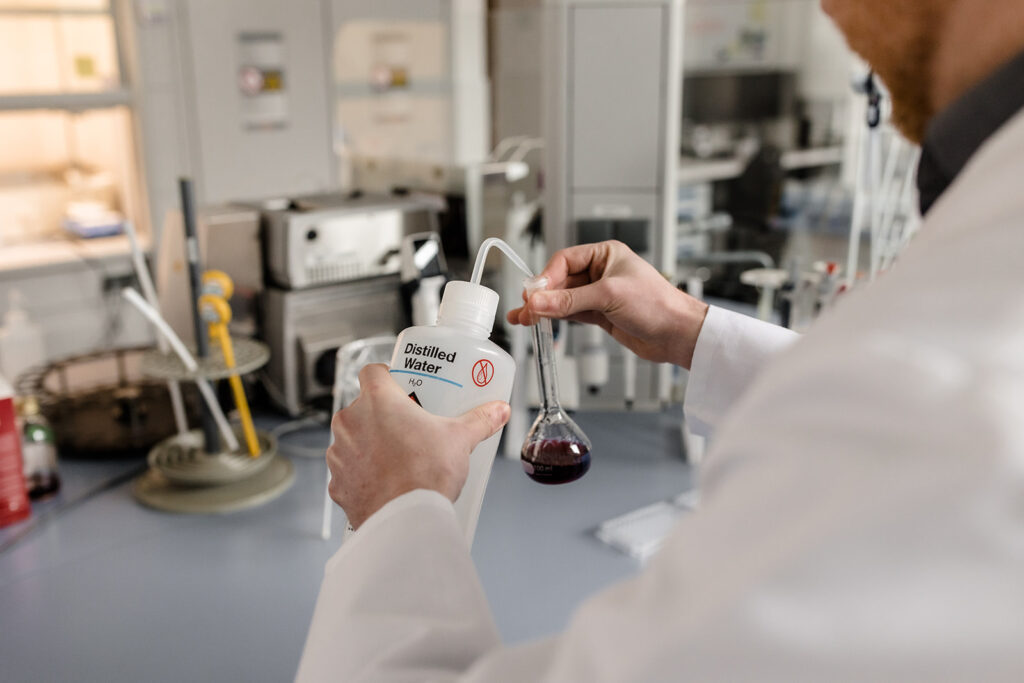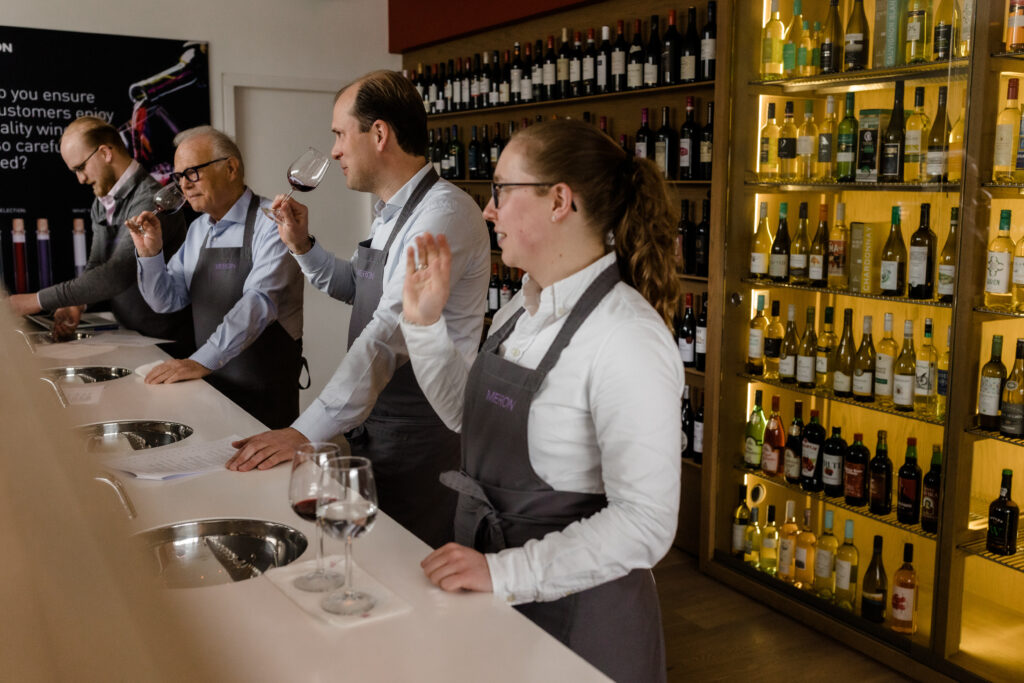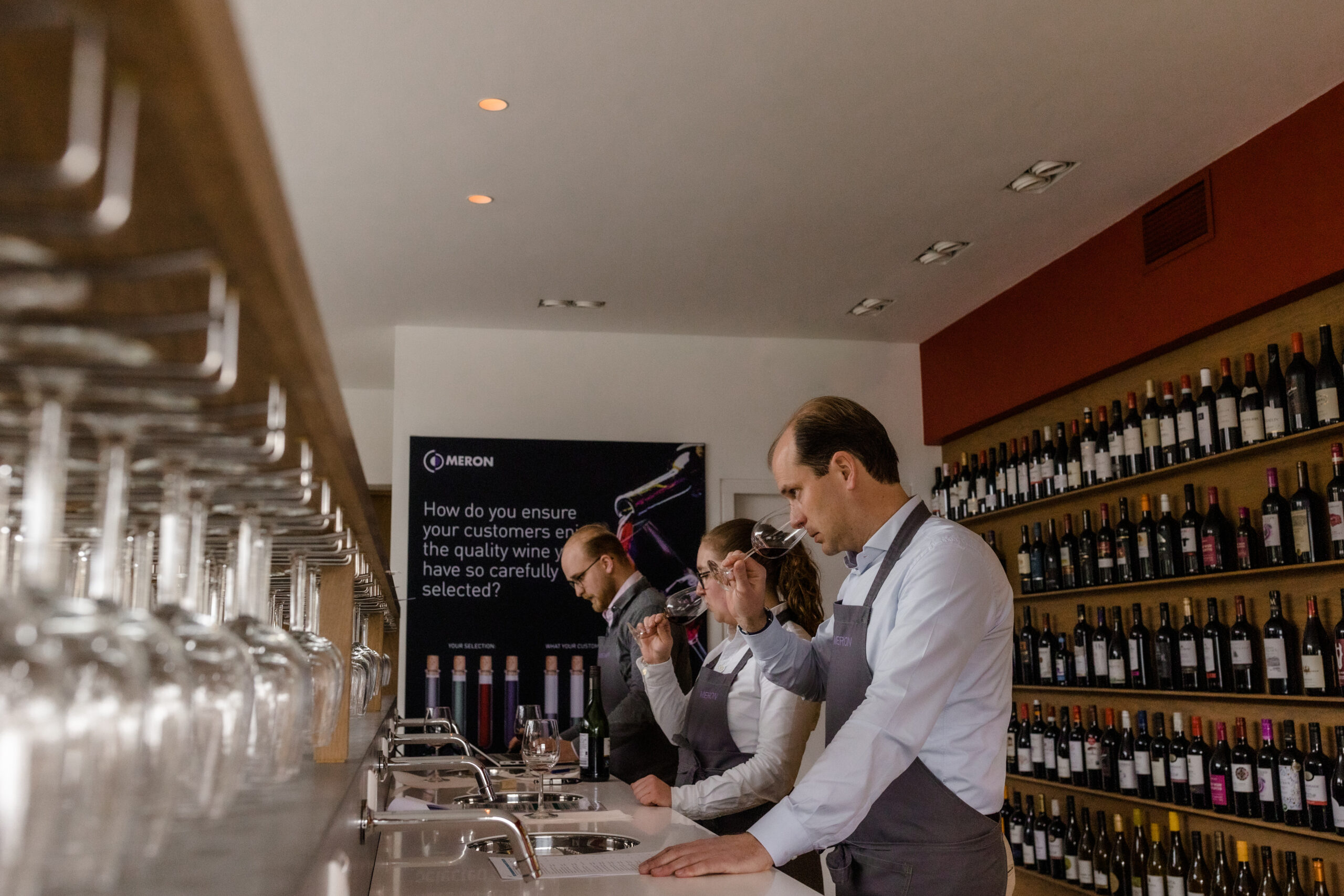Meron: Advancing Wine Quality Standards.
Recently we had the opportunity to visit Meron, one of the leading wine laboratories in the Netherlands. Our visit gave us some interesting insights in the world of wine testing and the way wine laboratories work. Join us on a journey through the fascinating world of wine analyze and quality controls.
The World of Wine Analyzes
Meron stands as the cornerstone of wine analysis in the Benelux region, offering comprehensive analysis services for wine, wine-related products, spirits, and liquors, with a particular focus on detecting wine abnormalities. With a rich history spanning three decades, Meron is the largest wine laboratory in the Benelux, boasting unparalleled experience and expertise. Annually, they meticulously analyze over 6,000 wines, solidifying their reputation as industry leaders.
Collaborating closely with Dutch retailers, Meron plays a pivotal role in ensuring the quality and integrity of wines available in the market, with almost all Dutch supermarkets relying on their expertise. This commitment to quality assurance is not mandatory, but it reflects the seriousness with which wine quality is regarded in the Netherlands. Given that food products are required to undergo testing, it’s only fitting that wine receives the same level of scrutiny. Meron’s analyses encompass wines responsible for approximately 350 million liters out of the 500-550 million liters consumed in Belgium and the Netherlands, highlighting their significant impact on the industry.
Meron is not merely a laboratory; it serves as an external extension of the quality assurance and purchasing departments of its clients. Central to their ethos is the belief that transparency is paramount, ensuring that clients receive accurate and reliable insights to make informed decisions about their products.
Physical Tasting vs Chemical Analysis – What is Relevant?
In the ongoing debate between physical tasting and chemical analysis in the evaluation of wines, the question arises: which is more relevant? In an era dominated by AI and data-driven approaches, can wine professionals still be relied upon to assess wines? The answer is both yes and no. While professional tasting remains an integral part of wine evaluation, it is complemented by chemical analysis, each method serving a distinct purpose.
Professional tasters continue to play a crucial role in developing tasting notes and organoleptic specifications for wines. However, it’s important to recognize that individual sensitivity to specific chemical compounds varies significantly from taster to taster. Despite this variability, it’s surprising to note that the outcomes of professional tasting panels align with analytical methods in approximately 90-95% of cases.
Each chemical compound responsible for shaping the final expression of wine has its own sensory threshold, which further complicates the tasting process. Chemical analysis, on the other hand, has the advantage of detecting these compounds before they reach their sensory threshold, providing early insights into the wine’s composition and potential development. This is particularly crucial when it comes to identifying abnormalities that may be developing in the wine. By conducting frequent analyses, wine professionals can anticipate the sensory characteristics that will emerge with further aging or development of the wine.
For retailers, this early detection of potential issues is invaluable, as it allows them to ensure that their stock of wines remains fresh and free from defects. In essence, while physical tasting and chemical analysis each have their place in wine evaluation, it’s the synergy between the two approaches that offers the most comprehensive understanding of a wine’s quality and characteristics.

Expertise
Meron’s expertise in wine analysis is unparalleled, encompassing a meticulous examination of 18 parameters essential for ensuring the quality and longevity of wine. These parameters, which include sulphite levels and turbidity, are critical for securing the shelf life of the wine and ensuring compliance with appellation parameters and legal requirements. Over the past 30 years, Meron has amassed a wealth of knowledge, accumulating around 5.2 million data points from wines sourced globally. With impending regulations mandating ingredient listing and nutritional information for each wine, Meron’s role has never been more crucial.
Utilizing advanced technology, Meron conducts objective screening of off-notes to identify faults, requiring just one milliliter of wine for analysis. Following analysis, wines undergo comparison with others from the same region and style, allowing Meron to pinpoint irregularities. In cases where concerns arise, Meron serves as an intermediary between the producer and the buyer, ensuring transparency and accountability throughout the process. This comprehensive approach to wine analysis underscores Meron’s commitment to upholding the highest standards of quality and integrity in the industry.
When is Wine Faulty?
Identifying wine faults presents a nuanced challenge, as many chemical compounds responsible for common faults can also exist in wines deemed sound. Meron tackles this complexity through its methodical approach, which includes organizing annual tastings of faults to meticulously re-establish thresholds for wines exhibiting defects. While these tastings may not boast glamour, they are indispensable for upholding the integrity of wine analysis. The involvement of multiple tasters is paramount, given the considerable variation in sensitivity to these compounds among individuals. Furthermore, professional tasters may possess blind spots for specific chemical compounds, underscoring the necessity of collective evaluation.
Furthermore, Meron acknowledges instances where elevated levels of chemicals responsible for off-flavours may not necessarily denote a wine as defective. Take, for instance, Sherry, renowned for its distinctive flavor profile; here, high concentrations of acetaldehyde are not deemed faults but rather integral to its character. Although these levels may surpass thresholds for other wine styles, they are cherished in wines from Jerez, underscoring the significance of context and cultural appreciation in evaluating wine quality.

From Tank to Table: Retaining Quality
While consumers may primarily focus on whether they enjoy the flavours of a wine, ensuring its quality is essential to their overall satisfaction. This is where companies like Meron play a crucial role, alleviating consumers’ concerns by ensuring they can confidently find wines they’ll enjoy.
Meron’s rigorous procedure for wine analysis begins with the tasting and analysis of wine from a tank sample, enabling them to establish a comprehensive product specification. Upon the wine’s arrival in Europe, Meron conducts thorough checks to ensure it aligns with these specifications. Throughout the product’s lifespan, Meron remains vigilant, continuously monitoring the wine’s condition to identify any potential issues before they impact the consumer market. This proactive approach not only assures consistency in product quality but also contributes to consumer satisfaction by addressing any concerns and avoiding potential brand damage for wineries or retailers.
For example, Meron’s ability to predict a wine’s shelf life decline before it becomes perceptible to trained tasters is invaluable. By analyzing indicators such as increased turbidity, decreased sulphite levels, and higher volatile acidity, Meron can anticipate potential quality issues and take appropriate measures to mitigate them. This level of insight not only benefits retailers by safeguarding the quality of their product offerings but also enhances the overall experience for consumers.

Meron’s Role in Preserving Wine Quality
Preserving wine quality is a multifaceted endeavor, often underestimated in its complexities. While many vintners emphasize that quality originates in the vineyard and can only be maintained post-harvest, the importance of preserving quality post-bottling should not be underestimated. Meron distinguishes itself in this arena, ensuring that the integrity of the wine is upheld throughout its journey to the final consumer. Although some winemakers may initially hesitate to subject their wines to detailed analysis, fearing criticism or scrutiny, they quickly recognize the invaluable insights that Meron provides. By transparently sharing this information with winemakers, Meron not only fosters a deeper understanding of their wines but also empowers them to make informed decisions and continually refine their craft. Ultimately, Meron’s unwavering commitment to preserving wine quality and fostering collaboration within the industry ensures that only the finest wines reach discerning consumers, enriching their overall experience and appreciation of wine.
This article was written by our own Barbora Peterikova in cooperation with Benjamin Roelfs. We thank Meron for the opportunity to visit their facilities and the valuable learnings they presented to us.

